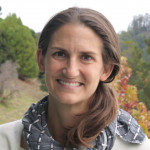As announced at the 2024 Department of Energy (DOE) Environmental System Science (ESS) Program Principal Investigators (PI) meeting, ESS-DIVE has $1M of community funds available for members of the ESS community who are interested in working on data management with ESS-DIVE.
Preference will be given to Priority Topics, however ideas that have clear value for the ESS community are welcome as well.
- New reporting formats
- New versions of existing reporting formats: Improve machine readability and compatibility with FusionDB, BASIN-3D etc., model data archiving for large outputs/ML
- Community data curators: Provide guidance to ESS community on best practices for submitting data to ESS-DIVE & help with adoption of reporting formats
- Data integration: Tools to integrate ESS-DIVE and other BER data
- Community data products: Products using ESS-DIVE & BER data for broad scientific use
To apply, submit a white paper (maximum 2 pages) describing the proposed effort by May 15, 2024 to ess-dive-leadership@lbl.gov. Please review our template with instructions for the whitepaper submissions available here.
You can email ess-dive-leadership@lbl.gov with questions about the whitepapers.





